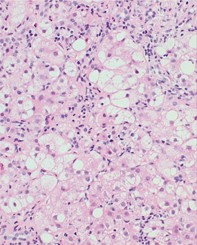Peer Reviewed
Feature Article Gastroenterology
Fatty liver disease: the next epidemic?
Abstract
Nonalcoholic fatty liver disease is often seen in patients who are overweight or have type 2 diabetes. Treatment includes reducing insulin resistance, reducing overall energy intake and saturated fat intake and minimising the risk of liver injury from other sources. Identification and management of this often asymptomatic condition is important to prevent progressive liver disease.
Key Points
- Nonalcoholic fatty liver disease (NAFLD) comprises a wide spectrum of liver damage ranging from simple steatosis to steatohepatitis, fibrosis and cirrhosis.
- Most patients with NAFLD are asymptomatic and have no signs of liver disease at the time of diagnosis. The liver disease is usually discovered incidentally during routine laboratory examination.
- Factors associated with a risk of more severe disease include high levels of alanine aminotransferase (ALT), age above 45 years, type 2 diabetes, obesity and hypertension.
- There is currently no drug treatment for NAFLD and management consists of treating associated conditions such as obesity and insulin resistance.
- Gradual weight reduction of 5 to 10% of bodyweight improves liver enzyme abnormalities and has been shown to improve liver histology.
Purchase the PDF version of this article
Already a subscriber? Login here.

